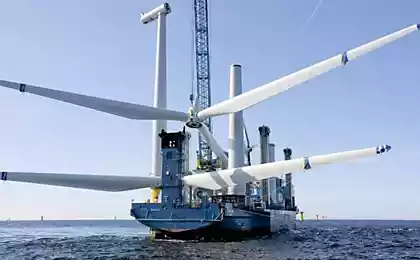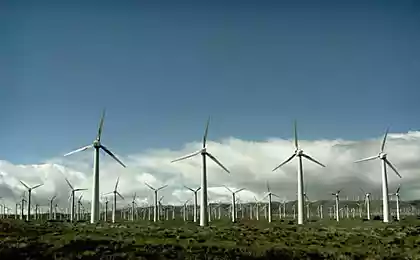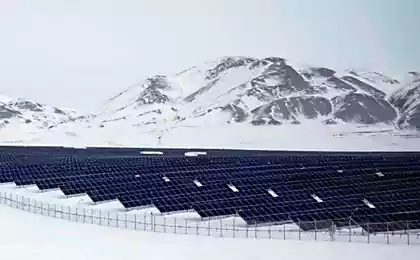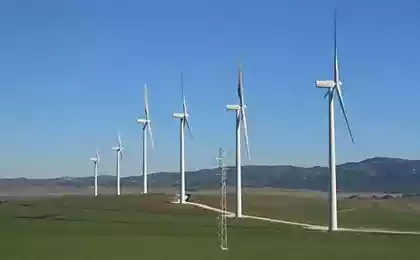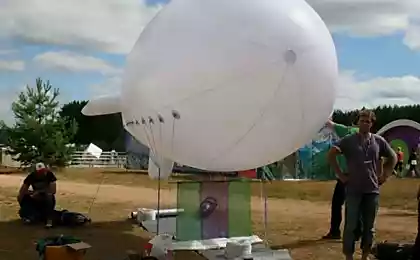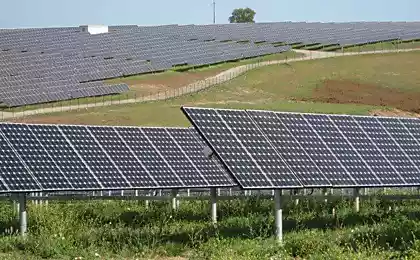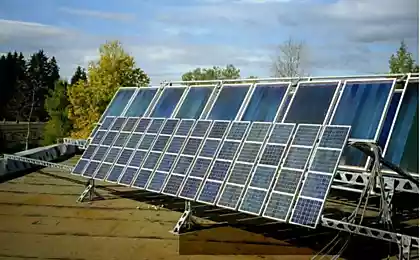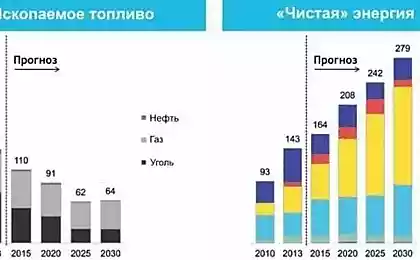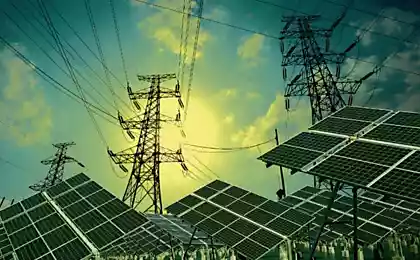740
The success of renewable energy in the world and attempts of development in Russia
The first major goal in the development of renewable energy sources (RES) in Russia was delivered in 2009. According to the plan, by 2020, their share in the energy mix of the country was supposed to reach 4.5%. However, four years later, it became clear that this is unrealistic. Goal changed to 2.5% by 2020. But the trouble is, again, something went wrong and in September 2016, energy Minister Alexander Novak said that "the amount of renewable energy without taking into account the production of hydro power by 2024 will be up to 2.5% of the total volume."
In such a situation it is very helpful to look for positive experiences and to share them.
Been doing the section on the development of renewable energy sources.
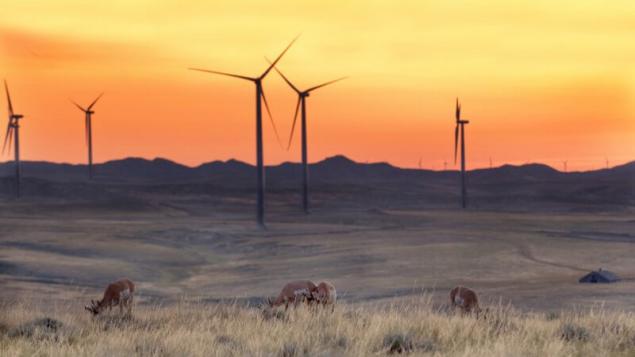
The prospects of a particular country cannot be considered in isolation from world trends, therefore, as the entry sounded a brief overview of the successes of renewable energy in the world, presented by an expert from Greenpeace Russia Yulia Pronina.
New records
As the statistics for the year 2016 have not yet been prepared, was based on the results of 2015, which became another record year for renewable energy development.
Thus, according to the Agency "Bloomberg", in 2015 investment in renewable energy globally reached $329 billion, the Leaders here were China, USA and Japan. Basically, the money invested in wind turbines and solar stations.
In 2015, commissioned 147 GW of new renewable energy (compared to 133 GW in 2014). Their total capacity has increased from 665 to 785, 9 GW – not including hydropower! The share of renewables in global electricity production reached 23.7%.
Solar generation has increased from 5.1 GW in 2005 to 227 GW by 2016. Wind turbines have increased their power during the same period from 59 to 433 GW.
Greenpeace experts have calculated different versions of the transition to renewable energy sources from the point of view put before mankind the task to hold the increase in global temperature of the planet within 2 degrees. The conclusion is that if we do not pass by the year 2050 to renewable energy sources, to achieve this goal will not succeed.
There are different forecasts for the future, which are very different from each other. For example, the International energy Agency (IEA) gives a much more pessimistic Outlook than Greenpeace.
IEA believes that by 2050 greenhouse gas emissions could increase by 56%. Greenpeace, given that the choice to reduce or not to reduce such emissions – humanity has no claims otherwise. By 2030, it is possible to reduce global CO2 emissions to 1990 levels, and by 2050 even 80% from the 1990 level. There are even more optimistic scenario: emission reductions by 2030 below the 1990 levels and by 2050 to 0%. It is not so fantastic as it seems.
All countries have significant potential for renewable energy and energy conservation that exceeds their level of energy consumption. For example, Western Europe and China renewable energy potential of 2-5 times higher than the required amount of energy. For Russia and CIS countries the excess is 10-12 times. For USA and Canada – 5-7 times. For Australia and Japan – 50 times!
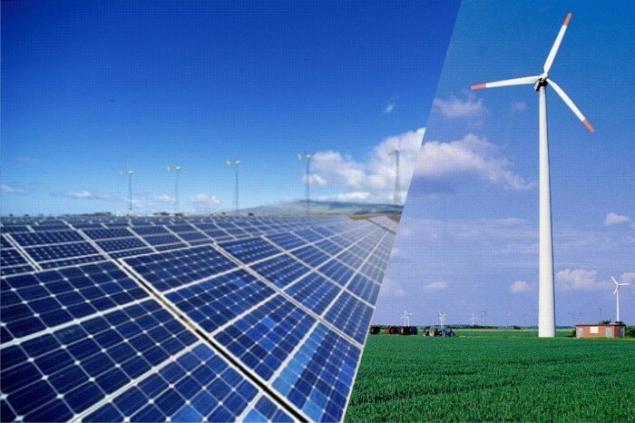
On fairly conservative estimates, by 2020 the total installed capacity of RES reaches 2625 GW.
By 2050 the share of renewable energies in heat supply to exceed 19% and in the transport sector – 52%.
The phase-out of fossil fuels suggests that by 2035, will cease to exist energy based on brown coal. By 2045 will stop the use of coal, and by 2050 will be almost reduced to zero the use of gas, refined petroleum products and nuclear fuel.
In the field of thermal energy also plans a massive shift to renewable energy sources. By 2050, to 94% of heat will be produced without using fossil fuels. Rest will temporarily provide gas. The stages of this process are as follows: 2012 – 21%; 2020 – 25%; 2030 – 43%; 2050 – 94%.
Quite optimistic, and the forecast on transport. While the IEA predicts an increase in fossil fuel use by 65%, Greenpeace believes otherwise. The consumption of traditional fuels will fall, and by 2050, its consumption will fall by 23%. Largely this will depend on the political will of governments and the judicious selection of the population in favor of alternative fuels and energy efficient vehicles.
So the potential is there, the technology is there, the incentive in the form of a climatic cataclysm too. Look at what all about – money!
The most optimistic scenario of Greenpeace, which involves investment in renewable energy $ 64.6 per trillion, is still beneficial, because by 2050 it will bring direct benefit of nearly $ 2 trillion. In addition, the fuel savings will be equivalent to $ 42 trillion.
In this scenario, would also restrain the growth of electricity prices. By 2050 its value will be 1.7-2.5 cents/kWh lower than in the scenarios prepared by the IEA.
Turning to the specifics of Russia, Julia Pronin has noticed that now the Russian owner of the solar panels or the wind turbine is in a strange situation. Russia to transfer energy from RES in the total network is not prohibited, but not permitted. Need to seek legislative support of the rights of the owner of the RES on it.
The practice of renewable energy development in the North-West
Yuriy Sergeyev, representative of the "Bellona" from Murmansk, reported on the practical results of the project on the development of renewable energy that is implemented on the Kola Peninsula in recent years.
Speaking about how the idea of renewable energy development-friendly people, Yuri said that it is difficult to find a region whose population would not know what it is. Wind turbines and solar panels have become a common element of the landscape, arrangement of buildings and settlements.
However, if the conversation comes to regional programs of development of RES, the mere knowledge is not enough. All minimally successful examples of renewable energy development in Russia due to a political decision of the regional authorities or business projects.
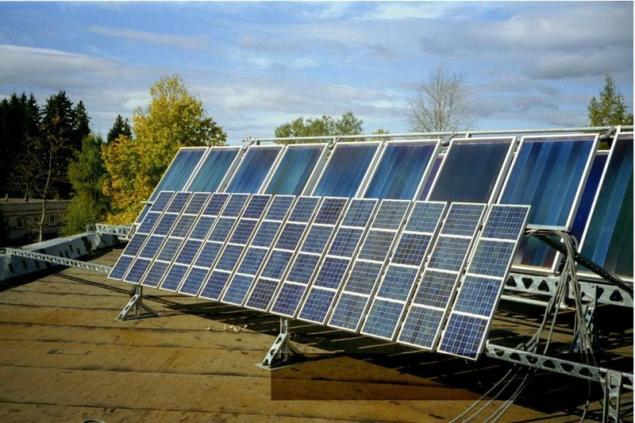
The project in the Murmansk region began with the fact that the "Bellona" together with the specialists of the Kola science centre conducted an assessment of the RES potential in the region. Despite the fact that the region of energy surplus – here are powerful Kola NPP and the many thermal stations – there are a lot of areas not covered by energy supply. It's remote areas and villages, which is provided by diesel generators. The study showed that the meteorological station, frontier, fishing and reindeer herding economy to efficiently provide installations from renewable energy sources. They will not only reduce the economic costs, but also improve the ecological situation and social conditions of life of the population.
According to the survey results, the report came out. His presentation came the Chairman of rural settlement Varzuga, which includes a few settlements, most of which electricity was supplied for 8-9 hours a day. After listening to the report, he went to pester – give money to the project "Bellona"!
In 2013, managed to get 30 million rubles for the development of a program for energy supply to remote settlements and to install a pilot in one of them.
The first installation of "three in one" in the Murmansk region earned in the spring of 2014 in the village of Palica (part of the Varzuga). It is a complex of four wind turbines of 5 kW, two diesel generators of 30 kW and 60 solar panels with a total capacity of 15 kW.
According to the regional authorities for only six months project in the village of Palitsi gave an economic effect of about 3.5 million rubles.
Then we launched another special programme, funded by 109 million rubles and 80% of the funds for its implementation was allocated by the regional budget, 15% Federal, 5% – municipal. The result of RES-systems in combination with diesel installations have appeared in 4 villages.
Another interesting project grew out of the realization that still could not manage to calculate the existing capacity of RES. Bellona has released the registries of such sources on the Kola Peninsula, Karelia and Arkhangelsk region.
Interestingly, in the Murmansk region and in Karelia "Bellona" has received support from ministries of energy and was able to get almost all necessary information on the objects.
In the Murmansk region a long time there was a problem with the beacons and navigation marks, who previously worked on nuclear energy sources – Ritega. Then they were replaced with solar panels. It is the object of the Ministry of defence, and even on appeal from the local energy has the answer – do not give data. There was another way. Came on manufacturers, which on open contracts supplying equipment. They have made – once again – open information.
In the Arkhangelsk region "Bellona" was faced with an absolute unwillingness by local officials to cooperate. Had to find the owners of energy facilities and gather information themselves. As a result, all has turned out.
After that, the organization invited the Centre for energy efficiency to create an interactive map of renewable energy sources, which now works successfully.
Joining forces for development of renewable energy, "Belona" gathers scientists, experts, producers, businessmen, community members at a Forum on renewable energy in Northwest Russia. Three such forum took place in Murmansk in 2008 and 2009. In 2010, it took St. Petersburg, and in 2012 – Petrozavodsk. It is planned to hold the next forum in 2017. The venue is not yet defined.
Like many other public organization "Bellona" works with students, conferences, competitions, and excursions to the objects. Together with the students created environmental computer games. The winners of the conferences and competitions and participate in the largest scientific-practical conference on renewable energy in Norway.
Issued a methodological aid for teachers "Climatic lessons". It is OK in all possible instances for use in schools.
Under the "Climatic lessons", if you speak the language of the expert is defined as "the totality of forms of organization of learning process, related by common content, including knowledge, activities and value orientations in the field of climate challenge to modern civilization." This manual is prepared taking into account the programmes for primary and secondary schools: biology, geography, chemistry, basics of life safety, social science and law.
Nuclear power plants and large hydroelectric dams are not renewable
About the problem of substitution of concepts in the discussion of the ways climate solutions told the head of the Krasnoyarsk public Association "the Dam" Alexander Kolotov.
During the discussion of the Paris agreements at the end of 2015 began to appear calls be used instead of the term "renewable energy", the term "non-carbon" or "low-carbon energy sources". Below them is meant nuclear and large hydro, which are levers of the fight against climate change.
This is totally unacceptable, as they and others inflict extremely high environmental damage and in General not allow to solve the problem of climate change that has repeatedly proved in various studies.
In February 2016 a project of the so-called "carbon free zone" in Eastern Siberia. According to its authors, it can reduce coal consumption. For this it was proposed to impose coal generation "carbon tax", the money to be spent on modernization of existing HPPs and construction of new hydro and nuclear power. Fortunately, a project like this put on the shelf, but with all of the negativity buried and its positive part.
For example, attempt to solve the problems of Northern delivery when spending so much money on the importation of fossil fuels in remote areas for incineration. The establishment of such carbon-free zone on the territory, existing on Northern delivery, could be the most important, most effective project.
Today, the Yakut company "Sakha Energy" creates in remote areas wind farms that will quickly pay off. Primarily by saving on the very North delivery.
"Let us offer to create the state Corporation "Rossana" or "Router" and let them learn the territory!" – suggested Alexander Kolotov.
PS In early November, following the discussion of contemporary issues of energy and combating climate change thirty representatives of Russian environmental organizations from seven Federal districts of the Russian Federation adopted a special document. It refers to the inadmissibility of increasing the share of nuclear power and large hydroelectric dams in the energy balance of Russia in the framework of long-term low-carbon development strategy of the country for the period up to 2050. published
Source: bellona.ru/2016/11/09/bellona-conference-renewable/
In such a situation it is very helpful to look for positive experiences and to share them.
Been doing the section on the development of renewable energy sources.

The prospects of a particular country cannot be considered in isolation from world trends, therefore, as the entry sounded a brief overview of the successes of renewable energy in the world, presented by an expert from Greenpeace Russia Yulia Pronina.
New records
As the statistics for the year 2016 have not yet been prepared, was based on the results of 2015, which became another record year for renewable energy development.
Thus, according to the Agency "Bloomberg", in 2015 investment in renewable energy globally reached $329 billion, the Leaders here were China, USA and Japan. Basically, the money invested in wind turbines and solar stations.
In 2015, commissioned 147 GW of new renewable energy (compared to 133 GW in 2014). Their total capacity has increased from 665 to 785, 9 GW – not including hydropower! The share of renewables in global electricity production reached 23.7%.
Solar generation has increased from 5.1 GW in 2005 to 227 GW by 2016. Wind turbines have increased their power during the same period from 59 to 433 GW.
Greenpeace experts have calculated different versions of the transition to renewable energy sources from the point of view put before mankind the task to hold the increase in global temperature of the planet within 2 degrees. The conclusion is that if we do not pass by the year 2050 to renewable energy sources, to achieve this goal will not succeed.
There are different forecasts for the future, which are very different from each other. For example, the International energy Agency (IEA) gives a much more pessimistic Outlook than Greenpeace.
IEA believes that by 2050 greenhouse gas emissions could increase by 56%. Greenpeace, given that the choice to reduce or not to reduce such emissions – humanity has no claims otherwise. By 2030, it is possible to reduce global CO2 emissions to 1990 levels, and by 2050 even 80% from the 1990 level. There are even more optimistic scenario: emission reductions by 2030 below the 1990 levels and by 2050 to 0%. It is not so fantastic as it seems.
All countries have significant potential for renewable energy and energy conservation that exceeds their level of energy consumption. For example, Western Europe and China renewable energy potential of 2-5 times higher than the required amount of energy. For Russia and CIS countries the excess is 10-12 times. For USA and Canada – 5-7 times. For Australia and Japan – 50 times!

On fairly conservative estimates, by 2020 the total installed capacity of RES reaches 2625 GW.
By 2050 the share of renewable energies in heat supply to exceed 19% and in the transport sector – 52%.
The phase-out of fossil fuels suggests that by 2035, will cease to exist energy based on brown coal. By 2045 will stop the use of coal, and by 2050 will be almost reduced to zero the use of gas, refined petroleum products and nuclear fuel.
In the field of thermal energy also plans a massive shift to renewable energy sources. By 2050, to 94% of heat will be produced without using fossil fuels. Rest will temporarily provide gas. The stages of this process are as follows: 2012 – 21%; 2020 – 25%; 2030 – 43%; 2050 – 94%.
Quite optimistic, and the forecast on transport. While the IEA predicts an increase in fossil fuel use by 65%, Greenpeace believes otherwise. The consumption of traditional fuels will fall, and by 2050, its consumption will fall by 23%. Largely this will depend on the political will of governments and the judicious selection of the population in favor of alternative fuels and energy efficient vehicles.
So the potential is there, the technology is there, the incentive in the form of a climatic cataclysm too. Look at what all about – money!
The most optimistic scenario of Greenpeace, which involves investment in renewable energy $ 64.6 per trillion, is still beneficial, because by 2050 it will bring direct benefit of nearly $ 2 trillion. In addition, the fuel savings will be equivalent to $ 42 trillion.
In this scenario, would also restrain the growth of electricity prices. By 2050 its value will be 1.7-2.5 cents/kWh lower than in the scenarios prepared by the IEA.
Turning to the specifics of Russia, Julia Pronin has noticed that now the Russian owner of the solar panels or the wind turbine is in a strange situation. Russia to transfer energy from RES in the total network is not prohibited, but not permitted. Need to seek legislative support of the rights of the owner of the RES on it.
The practice of renewable energy development in the North-West
Yuriy Sergeyev, representative of the "Bellona" from Murmansk, reported on the practical results of the project on the development of renewable energy that is implemented on the Kola Peninsula in recent years.
Speaking about how the idea of renewable energy development-friendly people, Yuri said that it is difficult to find a region whose population would not know what it is. Wind turbines and solar panels have become a common element of the landscape, arrangement of buildings and settlements.
However, if the conversation comes to regional programs of development of RES, the mere knowledge is not enough. All minimally successful examples of renewable energy development in Russia due to a political decision of the regional authorities or business projects.

The project in the Murmansk region began with the fact that the "Bellona" together with the specialists of the Kola science centre conducted an assessment of the RES potential in the region. Despite the fact that the region of energy surplus – here are powerful Kola NPP and the many thermal stations – there are a lot of areas not covered by energy supply. It's remote areas and villages, which is provided by diesel generators. The study showed that the meteorological station, frontier, fishing and reindeer herding economy to efficiently provide installations from renewable energy sources. They will not only reduce the economic costs, but also improve the ecological situation and social conditions of life of the population.
According to the survey results, the report came out. His presentation came the Chairman of rural settlement Varzuga, which includes a few settlements, most of which electricity was supplied for 8-9 hours a day. After listening to the report, he went to pester – give money to the project "Bellona"!
In 2013, managed to get 30 million rubles for the development of a program for energy supply to remote settlements and to install a pilot in one of them.
The first installation of "three in one" in the Murmansk region earned in the spring of 2014 in the village of Palica (part of the Varzuga). It is a complex of four wind turbines of 5 kW, two diesel generators of 30 kW and 60 solar panels with a total capacity of 15 kW.
According to the regional authorities for only six months project in the village of Palitsi gave an economic effect of about 3.5 million rubles.
Then we launched another special programme, funded by 109 million rubles and 80% of the funds for its implementation was allocated by the regional budget, 15% Federal, 5% – municipal. The result of RES-systems in combination with diesel installations have appeared in 4 villages.
Another interesting project grew out of the realization that still could not manage to calculate the existing capacity of RES. Bellona has released the registries of such sources on the Kola Peninsula, Karelia and Arkhangelsk region.
Interestingly, in the Murmansk region and in Karelia "Bellona" has received support from ministries of energy and was able to get almost all necessary information on the objects.
In the Murmansk region a long time there was a problem with the beacons and navigation marks, who previously worked on nuclear energy sources – Ritega. Then they were replaced with solar panels. It is the object of the Ministry of defence, and even on appeal from the local energy has the answer – do not give data. There was another way. Came on manufacturers, which on open contracts supplying equipment. They have made – once again – open information.
In the Arkhangelsk region "Bellona" was faced with an absolute unwillingness by local officials to cooperate. Had to find the owners of energy facilities and gather information themselves. As a result, all has turned out.
After that, the organization invited the Centre for energy efficiency to create an interactive map of renewable energy sources, which now works successfully.
Joining forces for development of renewable energy, "Belona" gathers scientists, experts, producers, businessmen, community members at a Forum on renewable energy in Northwest Russia. Three such forum took place in Murmansk in 2008 and 2009. In 2010, it took St. Petersburg, and in 2012 – Petrozavodsk. It is planned to hold the next forum in 2017. The venue is not yet defined.
Like many other public organization "Bellona" works with students, conferences, competitions, and excursions to the objects. Together with the students created environmental computer games. The winners of the conferences and competitions and participate in the largest scientific-practical conference on renewable energy in Norway.
Issued a methodological aid for teachers "Climatic lessons". It is OK in all possible instances for use in schools.
Under the "Climatic lessons", if you speak the language of the expert is defined as "the totality of forms of organization of learning process, related by common content, including knowledge, activities and value orientations in the field of climate challenge to modern civilization." This manual is prepared taking into account the programmes for primary and secondary schools: biology, geography, chemistry, basics of life safety, social science and law.
Nuclear power plants and large hydroelectric dams are not renewable
About the problem of substitution of concepts in the discussion of the ways climate solutions told the head of the Krasnoyarsk public Association "the Dam" Alexander Kolotov.
During the discussion of the Paris agreements at the end of 2015 began to appear calls be used instead of the term "renewable energy", the term "non-carbon" or "low-carbon energy sources". Below them is meant nuclear and large hydro, which are levers of the fight against climate change.
This is totally unacceptable, as they and others inflict extremely high environmental damage and in General not allow to solve the problem of climate change that has repeatedly proved in various studies.
In February 2016 a project of the so-called "carbon free zone" in Eastern Siberia. According to its authors, it can reduce coal consumption. For this it was proposed to impose coal generation "carbon tax", the money to be spent on modernization of existing HPPs and construction of new hydro and nuclear power. Fortunately, a project like this put on the shelf, but with all of the negativity buried and its positive part.
For example, attempt to solve the problems of Northern delivery when spending so much money on the importation of fossil fuels in remote areas for incineration. The establishment of such carbon-free zone on the territory, existing on Northern delivery, could be the most important, most effective project.
Today, the Yakut company "Sakha Energy" creates in remote areas wind farms that will quickly pay off. Primarily by saving on the very North delivery.
"Let us offer to create the state Corporation "Rossana" or "Router" and let them learn the territory!" – suggested Alexander Kolotov.
PS In early November, following the discussion of contemporary issues of energy and combating climate change thirty representatives of Russian environmental organizations from seven Federal districts of the Russian Federation adopted a special document. It refers to the inadmissibility of increasing the share of nuclear power and large hydroelectric dams in the energy balance of Russia in the framework of long-term low-carbon development strategy of the country for the period up to 2050. published
Source: bellona.ru/2016/11/09/bellona-conference-renewable/
In South Korea set a new record in the field of thermonuclear fusion
Hormones aging and hormones of youth: it is Never too late to start growing younger


